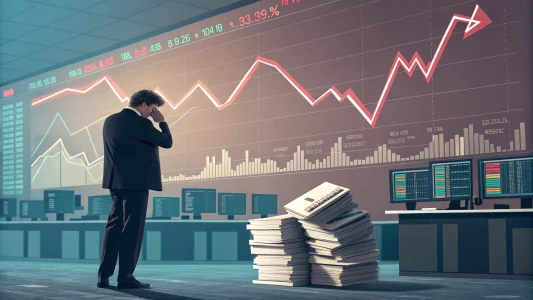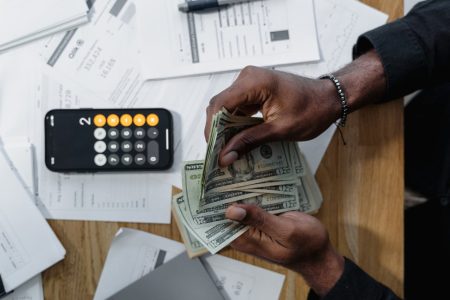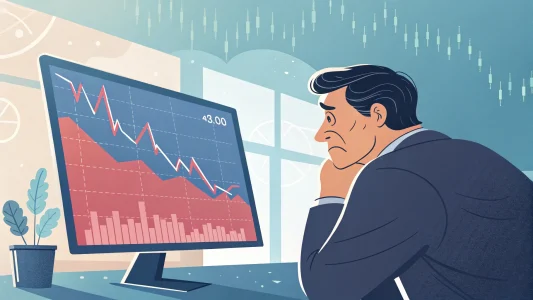The US debt was downgraded yesterday, signaling potential problems on the horizon for the American economy. This article explores the implications of this event, how it directly affects individuals, and what it means for the broader financial landscape. To grasp the significance of the recent debt downgrade, we will delve into the US government’s spending and borrowing practices, shedding light on the nation’s future economic health.
View this post on Instagram
A post shared by Taylor Sohns- CFP®, CIMA®, MBA- Finance (@lifegoalinvestments)
Table of Contents
ToggleUnderstanding the Government’s Income vs. Spending Problem
The government’s income and spending disparity is at the core of the US debt downgrade. Since 2001, the government has consistently spent more money than it generates through various sources of revenue, resulting in a habit of borrowing to cover expenses and creating an ever-growing debt burden.
To illustrate this problem, let’s consider a simpler example. Imagine a friend who, for each year since 2001, consistently earns $50,000 but spends $65,000. Every year, they must borrow money to cover their excess spending. Would you consider this friend a good candidate for a loan? Most people would not, and neither would financial rating agencies.
See Also: A Guide to Coping With Debt and Financial Stress
This brings us to the recent debt downgrade. Rating agencies assess the credit quality of borrowers, including governments. Given that the US has consistently spent more money than it generates since 2001, it is understandable that the rating agency would downgrade its credit rating.
Blank Check Government: A Dangerous Precedent
The US government operates on what can be called a “blank check” system, where the Treasury spends money until it reaches the debt ceiling set by Congress. When the debt ceiling is reached, Congress must approve raising the limit, allowing the government to continue borrowing. This creates a high-stakes game of chicken, with politicians pushing the debt limit to the brink, only to increase it at the last minute to stave off a potential financial crisis.
Such a system is inherently risky, raising questions about the government’s accountability and fiscal responsibility. Should a government that engages in such practices maintain the highest possible credit rating? The recent debt downgrade would suggest otherwise.
The Debt Downgrade Ripple Effect: What it Means for the Average American
When a government’s debt is downgraded, the immediate consequence is higher interest rates. Lenders demand higher compensation through higher interest rates to offset the increased lending risk to an entity with perceived fiscal instability. Consequently, higher interest rates are passed onto the general public, affecting various forms of debt, including mortgages, auto loans, and credit cards.
As the US government continues to incur higher interest rates due to its debt downgrade, the American people will also face increased costs associated with their borrowing. This could result in various negative economic consequences, such as reduced consumer spending, increased defaults on loans, and depressed growth in the business sector as companies struggle with rising borrowing costs.
Frequently Asked Questions
What does the US debt downgrade mean for the American economy?
The US debt downgrade indicates potential problems for the American economy. It reflects the disparity between the government’s income and spending, which has resulted in consistent borrowing to cover expenses, creating a growing debt burden. This downgrade may lead to higher interest rates, affecting various forms of debt for individuals and businesses and potentially impacting consumer spending, loan defaults, and economic growth.
Why did the US government’s debt get downgraded?
The US government’s debt was downgraded because it has consistently spent more money than it brings in since 2001. This practice of excessive borrowing raises concerns about the government’s fiscal responsibility and accountability, leading rating agencies to lower the nation’s credit rating.
How does the “blank check” system work, and why is it risky?
The “blank check” system allows the US government to spend money until it reaches the debt ceiling set by Congress. When the debt ceiling is reached, Congress must approve an increase, allowing the government to continue borrowing. This system creates uncertainty and can lead to last-minute decisions to raise the limit, risking potential financial crises and impacting the nation’s creditworthiness.
How does the debt downgrade affect the average American?
When a government’s debt is downgraded, lenders demand higher compensation through higher interest rates to offset the perceived fiscal instability. As a result, the general public, including average Americans, may face increased borrowing costs, impacting mortgages, auto loans, credit cards, and other forms of debt.
What are the potential negative consequences of higher borrowing costs?
Higher borrowing costs can lead to reduced consumer spending, increased loan defaults, and depressed growth in the business sector. Companies may struggle with rising borrowing costs, leading to potential economic challenges and uncertainties.
What can be done to address the issue of excessive borrowing and debt?
To address the issue of excessive borrowing and debt, meaningful fiscal reforms are required. This may involve cutting government spending, increasing revenue through taxation, or implementing other changes to reduce the fiscal deficit and reverse the trend of unbridled borrowing. Policymakers must work together to find solutions that preserve the long-term financial health of the US and protect average Americans from the burden of increased debt.
See Also: Should You Pay Off Debt or Invest in Your Business
What is the urgency of addressing this issue?
The recent downgrade of US debt signals an alarming situation that cannot be ignored. The unsustainable nature of a “blank check” government and the growing interest burden could lead to a potential debt crisis. Addressing these challenges promptly is crucial to maintain the nation’s economic stability and safeguard the financial well-being of its citizens.
The Unsustainability of a Blank Check Government and the Need for Reform
The recent downgrade of US debt is alarming for the government and the American people. The government’s longstanding excessive spending and borrowing pattern has led to an increasingly unstable financial position. This, in turn, has put pressure on the US credit rating and could result in higher borrowing costs for American citizens.
A blank check government cannot continue indefinitely, as the increasing interest burden will eventually become impossible. Meaningful fiscal reforms are required to mitigate the fallout from a potential debt crisis and preserve the long-term financial health of the US.
These may involve cutting government spending, increasing revenue through taxation, or implementing other changes to reduce the fiscal deficit and reversing the dangerous trend of unbridled borrowing. In any case, now is the time for US policymakers to face the reality of the nation’s economic situation and work together to find solutions, ensuring that the burden of increased debt does not fall on the shoulders of average Americans.

















